The Cosmic Companion Newsletter July 27, 2019
The Future of the Moon, Ripples in Space, and New Eyes in the Search for Dark Energy
Hello everyone!
July is nearly over, and what a month it was for astronomy and space exploration! We learned the true shape of the Milky Way galaxy, found a black hole that shouldn’t exist, and celebrated the 50th anniversary of the Apollo 11 mission. Now, we are on the verge of a new age of lunar exploration, a new set of eyes is ready to examine the Universe for gravitational waves, and a pair of stellar corpses could help us unravel a mystery first postulated by Albert Einstein a century ago.
Let’s take off!
The Week in Space
India Takes off to Touch the Moon - India is the latest nation to make a serious drive to explore the Moon, with the launch of the Chandrayaan-2 spacecraft on July 22. This mission includes an orbiter, lander, and rover.
On September 7, the Indian Space Research Organisation (ISRO) plans to set the lander and rover down between two craters, Manzinus C and Simpelius N, in the south polar region of the Moon. That area of the lunar surface is believed to hold vast quantities of water ice.
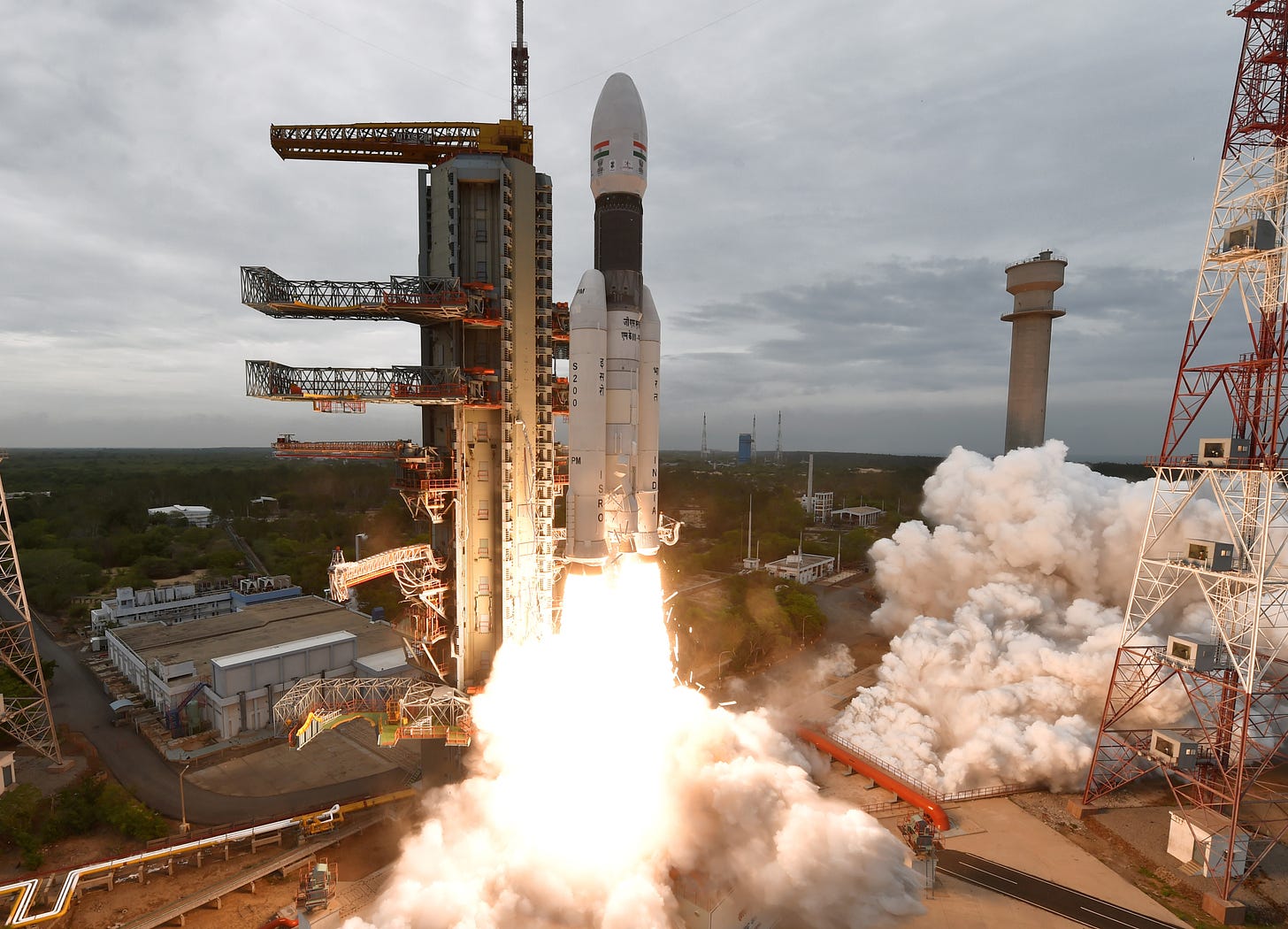
The Chandrayaan-2 mission takes off from the Satish Dhawan Space Centre SHAR at Sriharikota on the southeastern coast of India. Image credit: ISRO
Once the Vakram lander touches down on the Moon, a ramp will extend, and the Pragyan rover will roll out onto the lunar surface.
The lander and rover are expected to last one lunar day - 14 Earth days - and the orbiter is designed to last one year.
The Chandrayaan-1 orbiter was launched to the Moon in October 2008. This is India’s first mission to the lunar surface.
Read more: http://bit.ly/India-Moon
Why is Everyone Heading to The South Pole of the Moon? - India is only one of several nations and corporations currently setting their sites on the south pole of the Moon.
The NASA mission Artemis-3 is due to place the next human crew (including the first woman) on the Moon in the year 2024. China and Russia have also focused their attention on that region of the lunar surface.
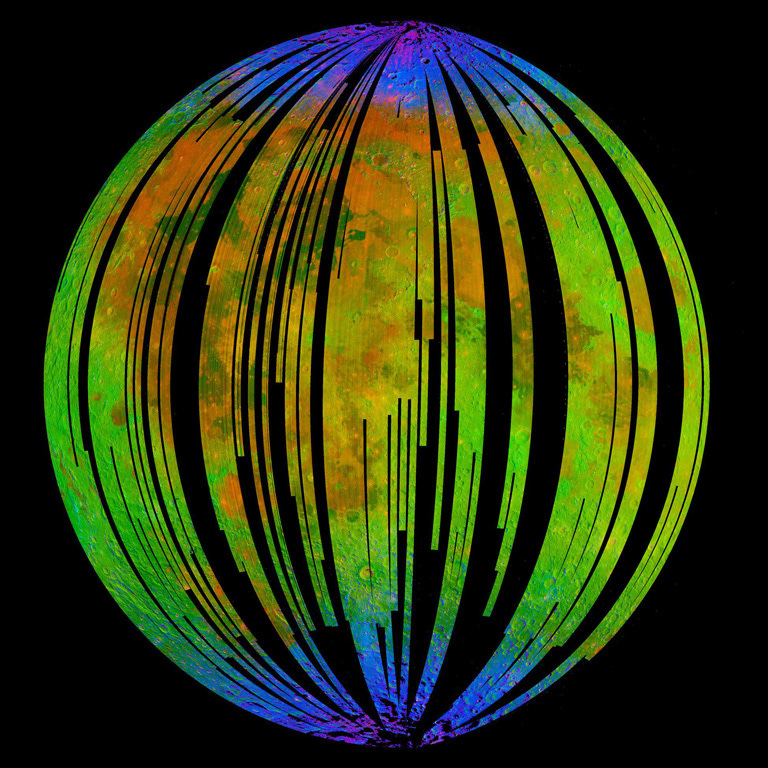
A map of water deposits on the Moon, created by the Chandrayaan-1 orbiter. Blue and purple regions represent reserves of water on the lunar surface. Image credit: ISRO/NASA/JPL-Caltech/Brown Univ./USGS
So what is attracting everyone to the southern polar region of the Moon? Hiding within eternally-shadowed craters near that pole are (likely) vast deposits of water ice. Such reserves could supply lunar explorers with water, as well as oxygen and rocket fuel, potentially making the Moon our first oasis in the desert of space.
Read more: http://bit.ly/Moon-South-Pole
White Dwarfs in Death Spiral Could Unravel Century-Old Mystery - Albert Einstein first predicted gravitational waves - ripples in spacetime - more than a century ago. These features of the Cosmos were first detected in 2015, emanating from a pair of colliding black holes. This one-time event, however, left little time for astronomers to study the gravitational waves produced by the catastrophic collision.
Now, a pair of white dwarfs have been discovered orbiting each other every seven minutes in a death spiral, and their movement may produce gravitational waves on an ongoing basis, providing a target for astronomers to examine as they study this elusive phenomenon.
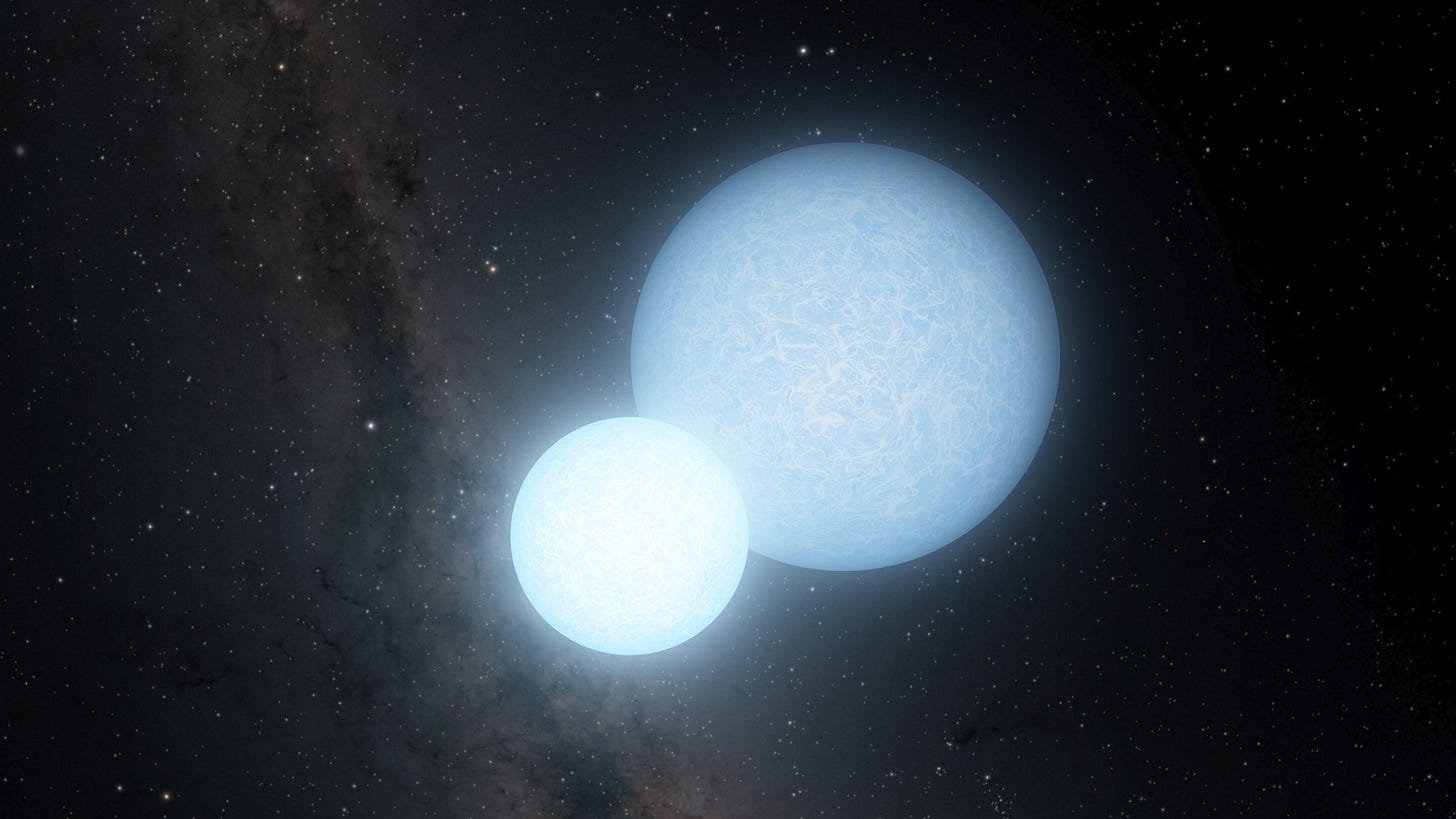
An artist’s concept of the J1539 system, featuring a pair of white dwarfs on a collision course with each other. Image credit: Robert Hurt/Caltech
White dwarfs are stellar corpses of stars which once had masses similar to our Sun, but are now just the size of the Earth. Astronomers believe the two members of the ZTF J1539+5027 (J1539) system will collide with each other in roughly 100,000 years.
The discovery was made at the 48-inch telescope at Mount Palomar, and confirmed by astronomers using the 2.1 meter telescope at Kitt Peak, where astronomer Vera Rubin found the first evidence of dark matter within galaxies in the 1970’s.
Read more: http://bit.ly/White-Dwarf-Gravitational-Waves
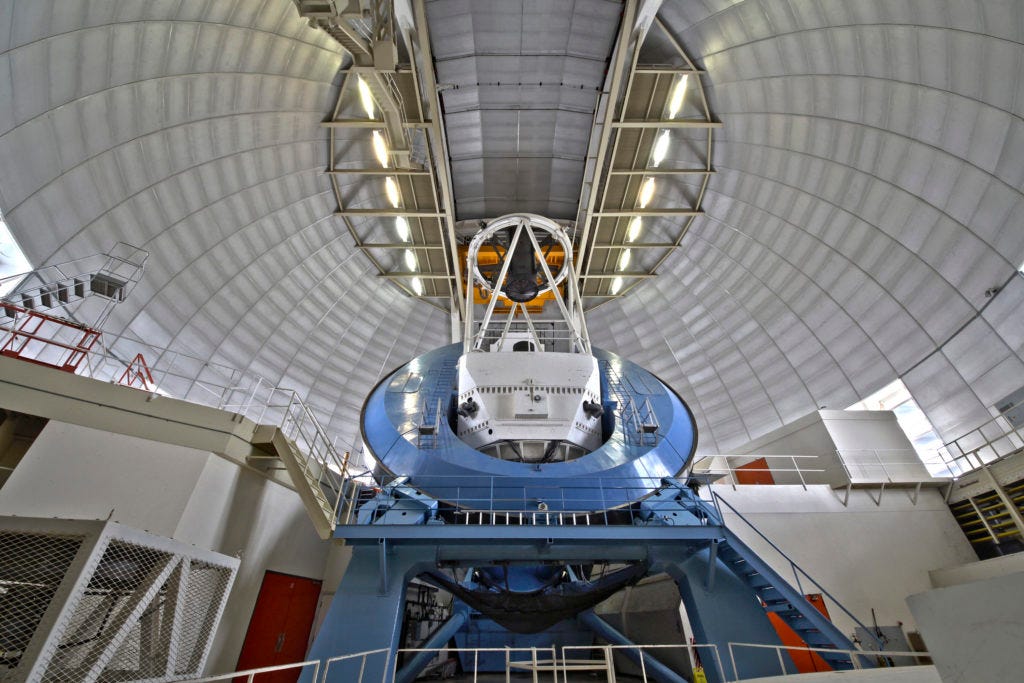
The Mayall four-meter telescope at Kitt Peak, where the DESI instrument is being installed to search for answers to one of the greatest mysteries in astronomy. Image credit: Lawrence Berkeley National Laboratory
New Eyes in the Search for Dark Energy - The four-meter telescope at Kitt Peak in Arizona is being equipped with a new set of eyes in the search for dark matter - the Dark Energy Spectroscopic Instrument (DESI). This instrument will obtain spectra for tens of millions of galaxies and quasars, attempting to better understand the nature of dark energy - one of the greatest mysteries in astronomy.
The expansion of the Universe is speeding up over time, contrary to classical ideas of physics. Astronomers attribute this to a mysterious “dark energy” fueling the expansion of the visible Cosmos.
The DESI instrument consists of 5,000 movable detectors set in 10 triangular “petals” that sit in the detector, like slices of pizza. The last two petals were installed in the instrument this week.
For several decades, the Mayall four-meter telescope at Kitt Peak was the second-largest telescope in the world.
Full story coming soon!
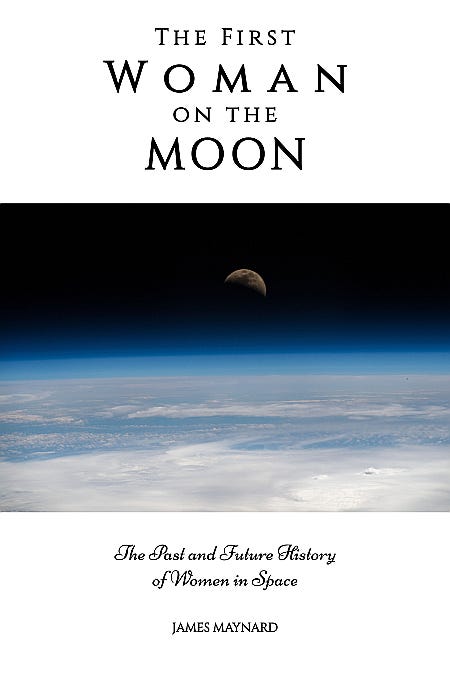
Coming soon: The First Woman on the Moon: The Past and Future History of Women in Space by James Maynard
Thanks for reading! If you want to keep up with the latest updates and news about astronomy and space exploration, visit www.thecosmiccompanion.com, join our Facebook page, and follow @TheCosmicCompanion on Instagram and @CompanionCosmic on Twitter.
Do you know someone else who would love this newsletter? Please share!
- James


